#stian kristiansen
Explore tagged Tumblr posts
Text
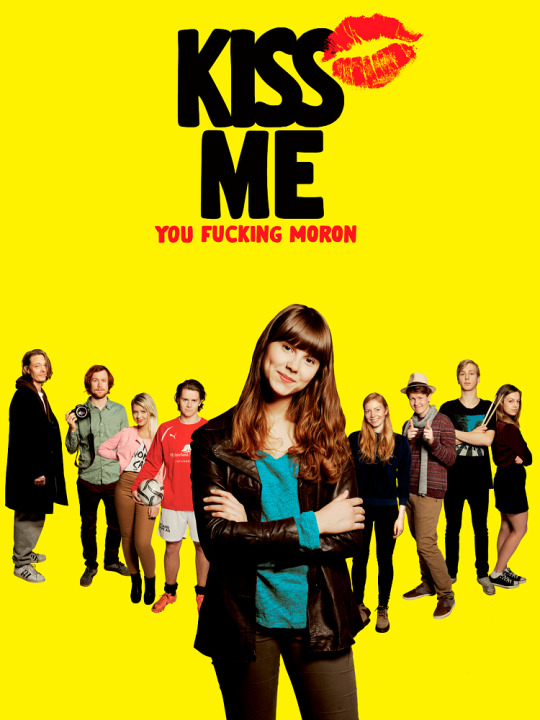
Mod note: The film is also known as Kyss meg for faen i helvete.
#movies#polls#kiss me you fucking moron#eili harboe#oyvind larsen runestad#stian kristiansen#drama#active
0 notes
Text

Mannen som elsket Yngve (The Man Who Loved Yngve) is a wistful and painfully bittersweet 2008 film directed by Stian Kristiansen. Set in late 1980s Norway, it explores the excitement, confusion, and anguish of falling in love (and the importance of mixtapes in 1980s romances).
1 note
·
View note
Photo

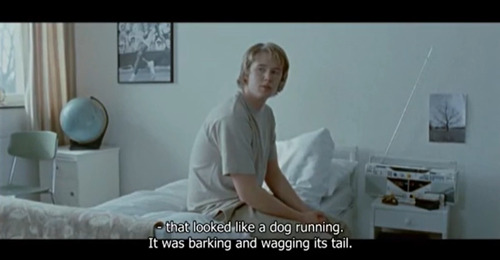








Mannen som elsket Yngve (2008), Stian Kristiansen
#mannen som elsket yngve#the man who loved yngve#ole christoffer ertvaag#rolf kristian larsen#stian kristiansen#norge#norway#norwegian cinema#scandinavian cinema#screencaps#subtitles#lgbtq
20 notes
·
View notes
Text


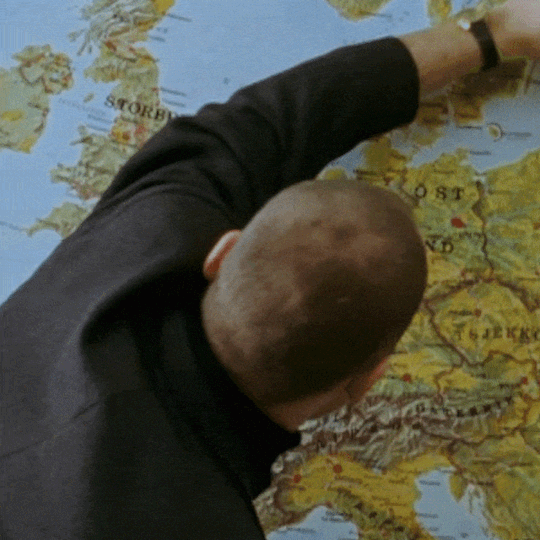




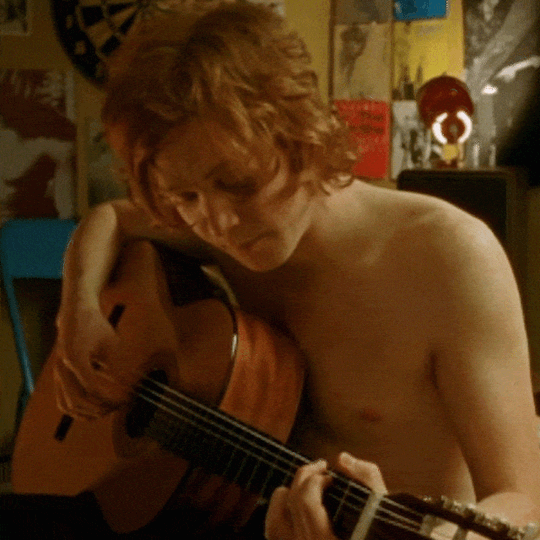


MANNEN SOM ELSKET YNGVE (2008)
#mannen som elsket yngve#the man who loved yngve#norsk film#norwegian film#norwegian cinema#lgbt#stian kristiansen#gay#lgbt cinema#kristoffer joner#gifs#my gifs#coming of age#rolf kristian larsen#arthur berning#ida elise broch#ole christoffer#the way i have more gifs of helge than yngve lol#the last one is so crunchy fml
69 notes
·
View notes
Video
youtube
Think of One
Knut Kristiansen Quartet
Aksel Røed – sax Knut Kristiansen – piano Sigurd Ulveseth – bass Stian Villanger – drums
3 notes
·
View notes
Text










MANNEN SOM ELSKET YNGVE (2008) dir. Stian Kristiansen
#mannen som elsket yngve#aka#the man who loved yngve#wish i had this in better quality#it's gay and sad#so you should watch it vgajkvbgad#one of my faves<3#also it has one of the best soundtracks ever#storm recs🐇: film#my gifs#my stuff
69 notes
·
View notes
Text
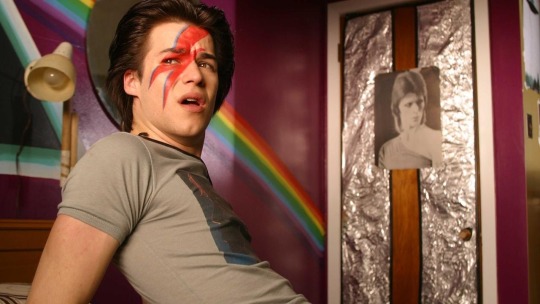
A Cinematic Outcoming.
From Istanbul to Chicago, and C.R.A.Z.Y. to Spirited Away, Letterboxd member, writer and film programmer Emre Eminoğlu explores the films that drove his gay awakening.
“I see it as my duty to never shut up about how representation matters.” —Emre Eminoğlu
I was one of the luckiest ones, yet I had no idea how lucky I was. Growing up in Istanbul, Turkey, a predominantly patriarchal, conservative and homophobic society, my luck was being born into an open-minded, secular and loving family.
In this bubble, I was isolated from the struggles of the majority of my people. I was not bullied at school by my peers, I was not forced into being someone else by my family. Yet I still had that voice in my head. As soon as I realized something could be different with me, I became my own bully and forcefully adopted a fictional persona: ‘exceptionally normal’.
Coming out was hard, but coming out to myself was harder. Although I was perfectly aware of my sexual identity, I could not come to terms with the possibility of being ‘abnormal’. Cue cinema. Watching films was a way of escape for high-school Emre—it still is—and it was inevitable that I would come across some LGBTQ+ films. I was not consciously in search of a ‘truth’ about myself but I started seeing my reflection in them, as they slowly disarmed the bully I involuntarily created.
Twenty years later, now, as a 34-year-old gay man professionally writing on cinema and television, I see it as my duty to never shut up about how representation matters. Streaming LGBTQ+ shows on various platforms, seeing widely released, mainstream LGBTQ+ films, listening to the music of openly LGBTQ+ stars, and hearing words of wisdom like “If you can’t love yourself, how in the hell you gonna love somebody else?”, I am confident that the personal, inner bully that I created twenty years ago would not survive a week in today’s world.
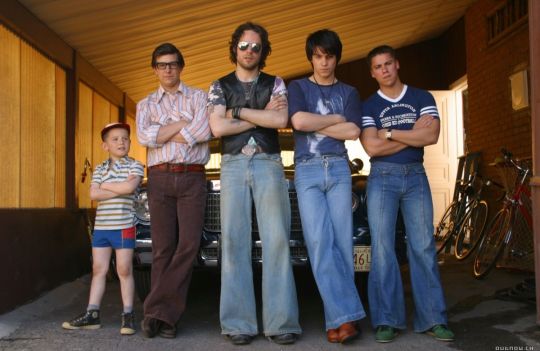
‘C.R.A.Z.Y.’ (2005)
Jean-Marc Vallée’s C.R.A.Z.Y. (2005) was definitely not the first LGBTQ+ film I ever watched, but it was an invaluable juncture in my life. It was a hot summer in Istanbul, freshman year of college was over. One of my best friends, who had been accompanying me through most of my cinematic discoveries, told me about a French-Canadian film with this guy on the film poster with David Bowie makeup on his face. We headed to an independent theater in Kadıköy to see it.
Zachary Beaulieu was different. As the lone gay son in a family of five boys, he too was forcefully adopting a fictional persona, and his way of escape was music. He was constantly worried about how to be worthy of his parents’ love, how to realize their ideals of him, and how his difference and truth contradicted all of that. Zac’s 1960s basically mirrored my story in the 2000s. I perfectly muted the life-changing enlightenment I was going through and did not vocalize my inner screams.
In two hours, C.R.A.Z.Y. helped me realize my true self and admit my sexual identity after all those years. It was a personal threshold I had been longing to cross… but there was still a lot to go through.
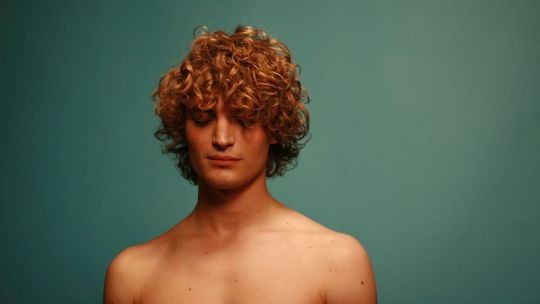
‘Les Amours Imaginaires’ (Heartbeats, 2010)
Liking someone, falling for someone, being loved, dating someone, sex, refusals, misinterpretations, heartbreaks, break-ups, bad sex. On the other side of the closet, I was being introduced to new, sometimes euphoric, sometimes gut-wrenching experiences. But coming out to my friends was still a challenge. I was feeling so lonely keeping all these wonderful and horrible experiences in my chest.
But I was not alone: LGBTQ+ films were my life’s understudy. The same heartbreaks, worries, and disappointments I was going through were right there on the silver screen. I took note as two best friends, Francis and Marie, fall for the same guy and navigate their friendship in Xavier Dolan’s Les Amours Imaginaires (Heartbeats, 2010). I studied how a popular student, Jarle, falls for the new guy in school, but cannot risk his reputation to be with him in Stian Kristiansen’s Mannen som Elsket Yngve (The Man Who Loved Yngve, 2008) and I watched as close friends Tobi and Achim become lovers, until one’s need to keep everything secret threatens to destroy the relationship in Marco Kreuzpaintner’s Sommersturm (Summer Storm, 2004).
Things were not always accessible via online platforms and the internet, so film festivals were often the only chance to see the latest independent and queer films. Two of the biggest film festivals in Istanbul, thankfully, had LGBTQ+-focused sections; !f’s Gökkuşağı (Rainbow) and Istanbul Film Festival’s Nerdesin aşkım? (Where are you, my love?) felt like home.
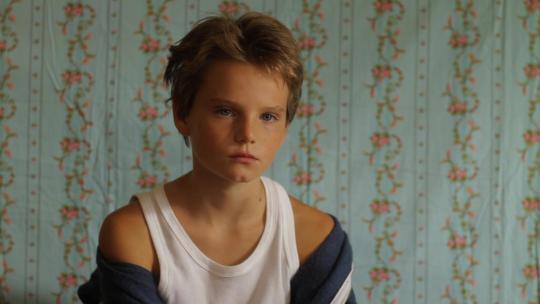
‘Tomboy’ (2011)
Being the lone avid cinephile among my friends, I was used to seeing half of my festival picks alone. Even before coming out to myself, my hopes for a romantic relationship included, among other things, having a festival partner. When I, fortunately, found the one, I was delighted to have also found the perfect festival partner. Shortly after our first month together, the first film we saw at a film festival was Céline Sciamma’s Tomboy (2011).
Although I was a 24 year old cis man, I was more than able to empathize with the title character, a ten-year-old trans boy. With his family unaware of his true identity, Mickaël experiences the liberation of a fresh start when ‘mistaken’ for a boy after they move to a new neighborhood—finally able to introduce himself as Mickaël, not Laure.
Changing my career path, a new job in the creative industry, and a stable relationship had similar effects on me. I was still not completely out to my parents, or some of my friends, schoolmates, and acquaintances from my past, but I was freed of the obligation to explain anything to my new friends or colleagues. I would proudly introduce them to my boyfriend, or simply correct people by saying I was attracted to men during a conversation. The perfect festival partner turned out to be a perfect partner as well—over the past ten years, he has helped me grow and be proud of myself.
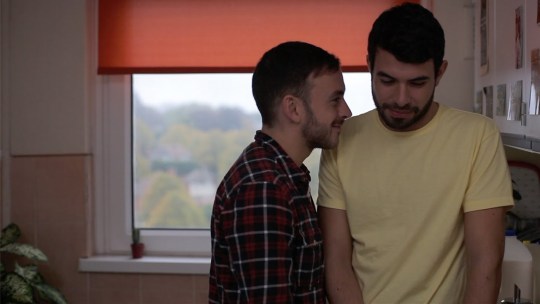
‘Weekend’ (2011)
We moved in together in the fifth year of our relationship. Right above our bed hangs a poster of Andrew Haigh’s Weekend (2011). At the time we saw it, it was just another film that we watched together and liked—no significance, no symbolism. It is the story of two young men, Russell and Glen, who are fascinated by the connection they find between each other, and are surprised how their one-night-stand evolved into the perfect weekend. When Glen reveals that he will be leaving for another country the very next day, it only makes their connection stronger, and their time together more precious. Being a timid and socially anxious person, none of my romantic relationships or my friendships had formed this organically. Even my first date with my partner was a disaster. We built what we have now over time, slowly and patiently. I did not believe in ‘weekends’.
And yet, one summer night, we met a guy on Grindr, as we occasionally did. What we thought was just another one night stand was in fact a transformative experience for us both. Intense conversation, a triple connection, the drinks we enjoyed instead of hurrying to bed, and the passionate sex turned that casual one-night-stand into a magical reality for us. We realized that we still had feelings and instincts to discover in ourselves and in each other. Over a week-long, unexpected, unpredictable polyamorous fling, we learned to act as one instead of two—only to find out that he was leaving for another country the very next week. This was our ‘weekend’.
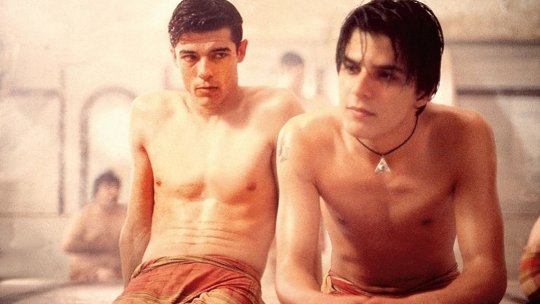
‘Hamam’ (Steam: The Turkish Bath, 1997)
Thinking how LGBTQ+ films of other cultures and languages had played a significant role in some precious, threshold-crossing moments of my life, it was alienating not being able to feel embraced and represented openly in Turkish cinema. There were certainly multiple Turkish LGBTQ+ films or characters, but they were in films addressing more urgent issues—right to live, violence against LGBTQ+ individuals, honor murders, trans murders—rather than the nuanced experience of queer love.
Although I discovered it years after it was released, Italian-Turkish director Ferzan Özpetek’s Hamam (Steam: The Turkish Bath, 1997) was a mind-blowing experience for me. The relationship, and the sexual tension, between Francesco, the Italian heir to a building with a Turkish bath in it, and Mehmet, the young son of the family managing the compound, felt much closer to my story and my cultural, familial identity.

Aşk, Büyü vs. (Love, Spells and All That, 2019)
Today, I am glad to see more and more filmmakers finding the courage to maintain the LGBTQ+ narrative in Turkish cinema, despite the oppressive, intolerant and exclusionary policies. Some are telling the youthful, urban stories I was longing for at the time: In Leyla Yılmaz’s Bilmemek (Not Knowing, 2019), Umut, a high-school athlete from a middle-class family in Istanbul, is bullied by his so-called modern and open-minded teammates after not replying to a query about whether he is gay or not. In Ümit Ünal’s Aşk, Büyü vs. (Love, Spells and All That, 2019), Eren and Reyhan, two adult women reunite in the magical atmosphere of The Princes’ Islands on the Istanbul coast, decades after they were forcefully separated by their parents.
The story of me coming out to myself all started with an urge to escape reality through cinema, and on the way, I found films that gave meaning to my muddled existence. When I saw Levan Akin’s And Then We Danced (2019), I smiled as I noticed the Spirited Away poster in Merab’s room; this minor detail another reminder that I was not alone. Merab, a gay dancer who is part of a very traditional and conservative Georgian dance company, was dealing with similar challenges in his life. He was trying to discover his true identity in a society that does not celebrate being different. He was too, finding an escape in cinema.
Coming out was hard. It still is. A recent Instagram post by the 27-year-old actor Connor Jessup, who came out as gay two years ago, reminded me coming out is not a single moment, but a never-ending process, a ‘becoming’. He writes, “When I first came out, a friend wrote to me and said, ‘Now you can really start coming out.’ Start? I thought. I just did it. But he was right. […] I’m going to keep trying. I’m going to keep looking.”
I keep trying, and looking. Learning about myself, my identity, my relationship. And LGBTQ+ films keep helping and inspiring me, just as they did in my journey to accept myself and become the person I am today. This is the power of cinema; unconsciously, you see your past, actuality and possibilities through the stories filmmakers tell. And I am so grateful to these filmmakers.
Related content
The Ten Greatest Turkish Films of All Time, according to the Turkish Film Critics’ Association
Emre’s Favorite LGBTQ+ Films: a personal top 50
Queer Films in Turkish Cinema—a list by Atakan
The Top 100 Turkish Movies of the 21st Century: Emre’s personal favorites
#letterboxd#pride#pride 2021#lgbtqia cinema#lgbt film#turkish cinema#turkish film#queer cinema#coming out#jean marc vallée
27 notes
·
View notes
Text
遇见英格之前,我以为我是直男
《那个爱过Yngve的男人》剧照 | ©️Motlys/Sandrew Metronome Norge
成长的故事各种各样,无非就是讲述一个人成为成年人——一个随着时间流逝逐年变得平庸的人,或是关于找到第一份工作的故事等等。这些故事都已经是老生常谈了。然而《那个爱过Yngve的男人》(又名《》,Mannen som elsket Yngve,2008)打破了这个限制而转向一个更特别的视角,成为一部青春启蒙影片。
这是1989年的挪威,古怪的荧光服正流行,随声听作为最新的潮流席卷了大街小巷。如果你对这样的时代感到陌生(你不是一个人),那么我们的主人公雅勒(Jarle , 罗尔夫·克里斯蒂安·拉森,Rolf Kristian…
View On WordPress
0 notes
Photo








THE MAN WHO LOVED YNGVE, 2008, Norway (dir. Stian Kristiansen) Ok. It isn’t called the EU, and it’s not called Russia. No one has an iPod. Cellphones and Internet and all that… it’s science fiction. It’s 1989. It’s called the EEC now, and I fucking hate it. It’s called the Soviet Union, the Cold War, and Maggie Thatcher. We’ve discovered oil and we’re rich. People here walk around in pink jackets, have perms and mullets, and listen to crap music. What have I done to deserve this? Everything around me is completely idiotic.
#the man who loved yngve#mannen som elsket yngve#filmedit#movieedit#lgbtfilm#Rolf Kristian Larsen#filmgifs#scandinavian cinema#jarle klepp#doyouevenfilm#cinema#myedit
124 notes
·
View notes
Text
Norwegian / old norse names and places
Every now and then I come across a book, movie, TV-series, fanfic, game or whatever, that mention a fictional "Norwegian" or "norse" place or person, and it just sounds so wrong it makes me either cringe or ROFL. Really. I still haven't recovered from the 1995 X-files episode, "Død Kalm", which took us to the port of "Tildeskan" where we met "Henry Trondheim", "Halverson" and "Olafsson". Hopefully this list will keep others from being that “creative” with names. :)
Common names for places, towns and villages in Norway
These names are very generic and suitable for a place, village or town anywhere (and pretty much any time) in Norway. Mix and match prefixes with suffixes for diversity. Bonus: All of these can also be used as surnames. Name (meaning) - usage
Nes (headland, cape, ness) - Standalone Bø (fenced-in field on a farm) - Standalone Fjell (mountain) - Standalone or prefix/suffix: Fjell- / -fjell Haug (small hill / large mound) - Standalone or prefix/suffix: Haug- / -haug Vik, Viken, Vika (inlet, the inlet, the inlet) - Standalone or prefix/suffix: Vik- / -viken / -vika Ås, Åsen (hill, the hill (larger than "Bakken")) - Standalone or prefix/suffix: Dal, Dalen (valley, the valley) - Standalone or prefix/suffix: Berg (small mountain) - Standalone or prefix/suffix: Berg(s)- / -berg Sand (sand) - Standalone or prefix/suffix: Sand- / -sand Strand (beach) - Standalone or prefix/suffix: Strand- / -strand Li (hill) - Standalone or prefix/suffix: Li- / -li Gran (spruce) - Standalone or prefix: Gran- Bratt (steep) - prefix only: Bratt- Myr (bog, mire) - prefix only: Myr- Neset, Nesset (the headland, the cape, the ness) - Standalone or suffix: -neset / -nesset Odden (foreland, headland) - Standalone or suffix: -odden Våg (cove, bay) - Standalone or suffix: -våg Lund (grove) - Standalone or suffix: -lund Sund (sound, strait) - Standalone or suffix: -sund Skog (forest) prefix/suffix: Skog- / -skog Øy (island) prefix/suffix: Øy- / -øy øya (the island) - suffix only: -øya bakken (the hill) - suffix only: -bakken gard / gård / gården (farm / farm / the farm) - suffix only: -gard / -gård / -gården elv, -elva (river, the river) suffix only: -elv / -elva stad (old word for town/place) suffix only: -stad vannet (the lake) - suffix only: -vannet
Common words that can be used as prefix to any of the suffixes above Svart- (black) Lille- (little/small) Sol- (sun) Brei-/Bred- (wide) Stor- (big) Lang- (long)
Common Norwegian surnames (contemporary)
Heredatory surnames didn't become mandatory in Norway until 1923. Many took the name from the farm or place they lived, or just changed their primary patronyms into hereditary patronyms. Example: Helgessønn/Helgesdatter (son of Helge / daughter of Helge) became Helgesen.
Alm Andersen Anderssen Antonsen Aspelund Bakke Bakken Bang Berg Bjerkan Bråthen Christensen Corneliussen Dahl Dahlberg Danielsen Dyrnes Dørum Eide Ellingsen Erdal Eriksen Falch Fredriksen Foss Fure Fylling Gabrielsen Gran Grønning Halvorsen Hansen Hanssen Hay Hoff Holm Holt Husby Isaksen Iversen Jacobsen Jensen Jenssen Johansen Karlsen Klausen Konradsen Kristensen Kristiansen Larsen Larssen Lie Lien Lund Løvold Magnussen Meyer Mikalsen Mo Moen Myhre Myklebust Mørk Ness Nilsen Olavsen Olsen Paulsen Pettersen Prestegård Rasmussen Riise Rogstad Ruud Simonsen Solbakken Solli Stokke Strøm Sund Svendsen Thorvaldsen Torp Thune Tønnesen Ueland Ulven Urdal Vik Vinje Wahl Wik Wilhelmsen Zakariassen Ødegård Årseth Årvik Ås, Aas Åsen, Aasen
Common Norwegian names -- 1980 - present
Men
Anders André Andreas Are Arne Atle Bjørn Cato Chris Christian, Kristian Christoffer, Kristoffer Daniel David Dennis Elias Emil Espen Erik, Eric Eirik Fredrik Filip Geir Harald Helge Hans Henning Håkon, Haakon Håvard Isak Jan Joachim Johan Johannes John, Jon Johnny Jonas Jonathan Kim Kristian, Christian Kristoffer, Christoffer Lars Lucas, Lukas Mads, Mats Magnus Martin Michael, Mikael Morten Niklas Nils Odin Ole Ove Paul Per Peter, Petter Preben Pål Richard, Rikard Roger Sebastian Simen Simon Sindre Sondre Stian Terje Thomas Thor, Tor Thore, Tore Vegard Werner William Øystein Åge Åsmund
Women
Andrea Ane, Anne Anette, Annette Annika, Anniken Astrid Bente Camilla Carina Cathrine Celine Charlotte Christin, Kristin Christina, Kristina Christine, Kristine Elin, Eline Elise Elisabeth Emilie Eva Frida Grete, Grethe Hanne Hege Heidi Helene Hilde Ida Ine Ingrid Ingvill, Ingvild Isabel, Isabell, Isabelle Iselin Jannicke Janine Jeanette Jennie, Jenny Julia, Julie Karoline (Kine) Katrin, Katrine Kristin, Christin Lea, Leah Lena, Lene Linda Line Linn Linnea Lise, Lisa Liv, Live Mai, May Maja Malin Margrete, Margrethe Mari, Maria, Marie Mariann, Marianne Marte, Marthe Mette Monica Nina Nora Oda Pia Ragnhild Randi Rikke Sara, Sarah Silje Siv Stina, Stine Susann, Susanne Tanja Tina, Tine Tiril Tone Trine Vilde Vera Veronica Wenche Åse Åshild
Common Norwegian names - 1800 - 1980
Men Aksel Albert Anders Andreas Anker Ansgar Arne Arnt Arve Asle Atle Birger Bård Charles Edmund Edvard Egon Erling Even Fred Fredrik Frode Geir Georg Gunnar Gunvald Gustav Harald Helge Hilmar Håkon, Haakon Ivar Ingvar Jens Jesper Jørgen Joakim Karl Karsten, Karstein Kjell Klaus Kolbein Kolbjørn Kristian Kåre Lars Lavrans Leif Lossius Ludvig Magne Magnus Nikolai Nils Odd Oddvar Odin Ola Olai Olaf Olav Ole Omar Oscar, Oskar Peder Per Petter Philip, Phillip Pål Ragnar Rikard Roald Roar (also Hroar) Rolf Rune Sigurd Sigvard, Sigvart Simon Svein Sverre Tarjei Terje Toralf, Thoralf Torbjørn, Thorbjørn Torleif, Thorleif Torstein, Thorstein Torvald, Thorvald Trond Ulf Ulrik Valdemar Wilhelm Willy Åge
Women
Albertine Alice, Alise Alma Anita Anna Annbjørg Asbjørg Astrid Aud Bente Berit Birgit Birgitte Bjørg Bjørgun Bodil Borghild Dagny Dagrun Edel Ella Ellen Elsa Fredrikke Frida Gerd Gjertrud Gunhild Gyda Hanna, Hannah Helga Henny Herdis Hilda Hilde Hjørdis Ingeborg Inger Irene Johanna, Johanne Jorun, Jorunn Josefine Judith Kari Karin Kirsten Kitty Kjersti Laila Lilli, Lilly Lisa, Lise Liv Lovise Mathilde Margaret Marit Martha Molly Nanna Oddrun Oddveig Olga Ragna Ragnhild Rigmor Sara Signe Sissel Solbjørg Solveig Solvår Svanhild Sylvi Sølvi Tora Torhild, Toril, Torill Torun, Torunn Tove Valborg Ylva Åse Åshild
Names usage Double names, like Ragnhild Johanne or Ole Martin are common in Norway. Just keep them as two names and don't use "-", and you'll be safe, even if it ends up a tongue twister. Using only one of two given names is also common practice.
In Norway everyone is on a first name basis. Students call teachers and other kids' parents by their first name, workers call their boss by their first name, we call our Prime Minister by her first name (journalists will use her title when speaking to her though). Some senior citizens still use surnames and titles when speaking of or to people their own age.
There are some exceptions. For example, a doctor may be referred to as Dr. Lastname when we speak of them, but first name is used when speaking to them. A priest is "the priest" when speaking of him/her and their first name is used when spaking to them. In the millitary only surnames (and ranks) are used. If you meet Harald, the King of Norway, in an official setting you will refer to him as "Kongen" (the king). If you run into him at the gas station, or while hiking, he is "Harald".
If you don't know someone's name it is okay to use their title, or just say "you".
Names for pets (contemporary)
Dogs Laika (f) Bamse (m) (bear) Tinka (f) Loke/Loki (m) + characters from TV/film/books...
Cats Melis (m/f) (powdered sugar) Mango (m/f) (mango) Pus (f) (kitty) Mons (m) (tomcat) Nala (f) Pusur (m) (Garfield) Felix (m) Simba (m) + characters from TV/film/books...
Horses Pajazz (m) Mulan (f) Balder (m) - cold blood Kompis (m) (pal) Freya (f) - cold blood + characters from TV/film/books...
Rabbits Trampe (m) (Thumper) Trulte (f) + characters from TV/film/books...
Cows (yes, I am serious) Dagros Rosa Mira Luna Sara + characters from TV/film - Disney is popular, as are the Kardashians :)
Road and street names
Storgata (usually the main street) Kongens gate (the king's street) Dronningens gate (the queen's street) Jernbanegata (railroad street) Jernbaneveien (railroad road) Sjøgata (ocean street) Sjøveien, Sjøvegen (ocean road) Skolegata (school street) Torvgata (plaza street) Industrigata (industrial street) Industriveien (industrial road)
Prefixes Blåbær- (blueberry) Bringebær- (raspberry) Bjørke- (birch) Aspe- (asp) Kastanje- (chestnut) Solsikke- (sun flower) Blåklokke- (blue bell) Nype- (rosehip) Kirke- (church) Park- (park)
Suffixes -veien, -vegen (the road) -stien (the path)
Other Torvet (the plaza) - standalone or suffix: -torvet Havna (the port) - standalone or suffix: -havna Kaia (the port) - standalone or suffix: -kaia
Safe solution: use a first name or surname as prefix.
Old norse
Men’s names Agnarr (Agnar) Alfr (Alf) Ámundi (Amund) Ánarr Árngrimr (Arngrim) Askr (Ask) Auðun (Audun) Baldr (Balder) Beinir Bjørn Burr Borkr Dagfinnr (Dagfinn) Davið (David) Drengr Durinn Einarr (Einar) Eirikr (Eirik) Eivindr (Eivind) Erlingr (Erling) Fafnir Flóki Freyr (Frey) Fuldarr Galinn Gautarr (Gaute) Gegnir Geirr (Geir) Glóinn Grímarr (Grimar) Hafli Hakon Hallsteinn (Hallstein) Haraldr (Harald) Haukr (Hauk) Heðinn (Hedin, Hedinn) Helgi (Helge) Hrafn, Hrafni (Ravn) Hrafnkell (Ravnkjell) Iarl (Jarl) Ingolfr (Ingolf) Iuar (Ivar) Jafnhárr Jón Jóngeirr Kál Kiaran Klaus Knútr (Knut) Kolgrimr (Kolgrim) Kolr (Kol) Leifr (Leif) Loki Lyngvi Magnus Mikjáll (Mikal, Mikkel) Mór Morði Nesbjørn Nokkvi Oddr (Odd) Oddbjørn Oðin (Odin) Olafr (Olaf) Ormr (Orm) Otr Ouden Pálni Pedr Ragnarr (Ragnar) Ragnvaldr (Ragnvald) Randr (Rand) Róaldr (Roald) Rólfr (Rolf) Salvi Sigarr (Sigar) Sigbjørn Sigurðr (Sigurd) Skarpe Snorri (Snorre) Steinn (Stein) Sveinn (Svein) Teitr Þor (Thor/Tor) Þórbjørn (Thorbjørn/Torbjørn) Þorsteinn (Thorstein/Torstein) Tryggr (Trygg) Týr Ulfár Ulfheðinn (Ulvhedin) Ulfr (Ulf) Vakr Vani Veigr Viðarr (Vidar) Yngvarr (Yngvar) Æsi
Women's names
Anna Arnfriðr (Arnfrid) Ása Bera Bergdís (Bergdis) Biørg (Bjørg) Cecilia Cecilie Christina Dagný (Dagny) Dagrún (Dagrun) Dís Dísa Edda Elin Ellisif (Ellisiv) Freyja (Freya) Friða (Frida) Frigg Gerðr (Gerd) Gertrud Grima Gyða (Gyda) Hadda Hallbéra Hallkatla Herdís (Herdis) Hildigunnr (Hildegunn) Huld Hvít Ida Iðunn (Idun, Idunn) Ingríðr (Ingrid) Johanna Jórunn (Jorun, Jorunn) Juliana Katla Katrine Kristín (Kristin) Leikný (Leikny) Lif (Liv) Magnhildr (Magnhild) Mjøll Myrgiol Nál Nanna Nótt Oda Oddný (Oddny) Ólaug (Olaug) Rafnhildr (Ragnhild) Rán Rannveíg Ríkví (Rikvi, Rikke) Rúna (Runa) Roskva Sága (Saga) Sif (Siv) Sigriðr (Sigrid) Skaði (Skadi) Skuld Svana Sýn Solveig Tekla Tóra (Tora) Trana Ulfhildr (Ulfhild) Una Urðr (Urd) Valborg Vigdís (Viigdis) Vírún Yngvildr (Ingvill, Ingvild) Yrsa
Bynames Bynames, or nicknames, could be neutral, praising or condescending. Usually bynames described a person's
body, bodyparts, bodily features
age
kinship and descent
territorial origin
knowledge, belief, spirituality
clothing, armour
occupation, social position
nature
Examples: Eirik Blodøks (Eirik Blood-Axe), Gammel-Anna (old Anna), Halte-Ása (limping Ása). I suggest that you stick with English for bynames, or use (relatively) modern language if you are writing in Norwegian.
Surnames
Surnames weren't really a thing until 1923 when they became mandatory. Before 1923 patronyms (son/daughter of) were used, and the name of the farm you lived on was often added as an address.
For instance: Helgi Eiriksøn (Helgi, son of Eirik), who lived at the farm called Vollr (grass field), would be called Helgi Eiriksøn Vollr. If he moved to the farm called Haugr his name would change to Helgi Eiriksøn Haugr.
Patronyms
Men: Use father's first name and add -sen /-son /-sønn Women: Use father's first name and add -dotter / -dottir / -datter
Farm names
Farm names were usually relevant and derived from either the location, a nearby landmark, nature or from occupation. I suggest you stick with the modern forms for farm names.
Old Norse (meaning) - modern Bekkr (stream) - Bekk, Bekken Dalr (valley) - Dal, Dahl Horn (horn) - Horn Vollr (field) - Vold, Volden Lundr (grove) - Lund
The list of common names for places/villages/towns is still valid, although the spelling is modern. Just keep it simple and make "clever" combos based on meaning.
546 notes
·
View notes
Text
The Man Who Loved Yngve (2008)
Is it gay?: Yes
Warnings/Notes: 😢
Description: A teenage boy loses his footing when he finds himself drawn to the new boy in class.
Director: Stian Kristiansen
Running Time: 1hr 30min
7 notes
·
View notes
Photo

NAPALM EVENTS is very proud to add Sludge/Doom/Post-Metal steamroller DWAAL from Oslo, Norway, to the Napalm Events artist roster! NAPALM EVENTS' booking agent Thorsten Harm witnessed their powerful live performance at by:Larm Festival in Oslo two weeks ago and was hooked immediately! Thorsten Harm comments: "More or less I joined their show incidentally – and I wasn't prepared for them at all, DWAAL hit me hard! Their slow and heavy wall of sound and the outstanding vocals of their singer Bjørnar on top of it literally blew me away, totally unexpected. This metal outfit is super talented and delivers a unique blend of heavy, atmospheric Sludge/Doom/Post-Metal with a terrific Black Metal topping, big time!" DWAAL released their killer debut album Gospel of the Vile through Dark Essence Records on 28th February 2020. DWAAL is looking forward what's ahead of them and comments: "After years looming in the shadows of the local underground scene, DWAAL is getting ready to move out of the basement and experience the world. We've just released our debut album Gospel of the Vile, an effort that has taken a very long time to complete. The reviews have been amazing, even humbling to read. Now we're stepping up our live activity, and we're extremely delighted to announce our commitment to NAPALM EVENTS and our shared future. Hope to see as many of you as possible in as many locations as possible, in the not too distant future!" DWAAL are: Bjørnar Kristiansen - vocals Rikke Karlsen - guitar Eigil Dragvik - guitar Stian Hammer - bass Siri Vestby - synth Anders Johnsen - drums https://www.instagram.com/p/B9mY2SaBzJ7/?igshid=ntkjjbj01o5g
0 notes
Photo







Mannen som elsket Yngve (2008), Stian Kristiansen
#mannen som elsket yngve#the man who loved yngve#rolf kristian larsen#ole christoffer ertvaag#stian kristiansen#norge#norway#norwegian cinema#scandinavian cinema#screencaps#subtitles#lgbtq
12 notes
·
View notes
Video
vimeo
Joachim is retiring from base-jumping to become a father for the first time, but first he will stop at nothing to pull off his very last jump. Last Base has screened at over 100 festivals and won more than 20 awards. Written & Directed by Aslak Danbolt Starring: Petter Width Kristiansen & Kenneth Åkerland Berg DOP: Stian Thilert Editor: Bjørnar Rydland Thyholdt Sound/mix: Fanny Wadman Producer: Pål Nordås Selected festivals: - Tribeca Film Festival 2015 - Chicago International Film Festival 2015 - Slamdance Film Festival 2015 - Leeds International Film Festival 2014 - Montreal World Film Festival 2015 - Vancouver International Film Festival 2015 - Sleepwalkers International Short Film Festival 2015 - *Jury Prize* - Leuven International Short Film Festival 2014 - The Norwegian Short Film Festival Grimstad 2015 - Trento Film Festival 2016 - *Genziana d`Argento - Best Short Film*
0 notes
Video
vimeo
LAST BASE from Aslak Danbolt on Vimeo.
Joachim is retiring from base-jumping to become a father for the first time, but first he will stop at nothing to pull off his very last jump.
Last Base has screened at over 100 festivals and won more than 20 awards.
Written & Directed by Aslak Danbolt Starring: Petter Width Kristiansen & Kenneth Åkerland Berg DOP: Stian Thilert Editor: Bjørnar Rydland Thyholdt Sound/mix: Fanny Wadman Producer: Pål Nordås
Selected festivals:
- Tribeca Film Festival 2015 - Chicago International Film Festival 2015 - Slamdance Film Festival 2015 - Leeds International Film Festival 2014 - Montreal World Film Festival 2015 - Vancouver International Film Festival 2015 - Sleepwalkers International Short Film Festival 2015 - *Jury Prize* - Leuven International Short Film Festival 2014 - The Norwegian Short Film Festival Grimstad 2015 - Trento Film Festival 2016 - *Genziana d`Argento - Best Short Film*
0 notes
Text
吻我,你这该死的白痴!
《吻我,你这该死的白痴》剧照|©Motlys/Nordisk Film
当我一看见这部电影的名字,我就知道我得看它(当然,不幸的是,看到它的国际发行版本变成了《亲我,该死的》Kiss Me, Damn It)。
电影标题很棒很吸引眼球,这也让我得到了与期待不同的东西。我期待的是一个喧闹的青少年喜剧,但它更倾向于剧情片,从很多方面来说都出乎我的意料。
塔莱(Tale,Eili Harboe 饰演)17岁,住在挪威一个偏远小镇,想成为一个女演员。
她和朋友在一个业余的表演剧团,但他们厌倦了继续在舞台上表演愚蠢的讽刺剧。塔莱建议团队排练乔恩·福斯(Jon Fosse,一个著名的挪威剧作家)的戏剧,她缠着著名的演员拉尔斯(Lars,Kristoffer Joner饰演)给他们做导演。
拉尔斯出现在小镇上和朋友住在一起,而且正在经历中年危机,他坚持选一个本地的捣蛋鬼维格拉德(Vegrad,Øyvi…
View On WordPress
0 notes